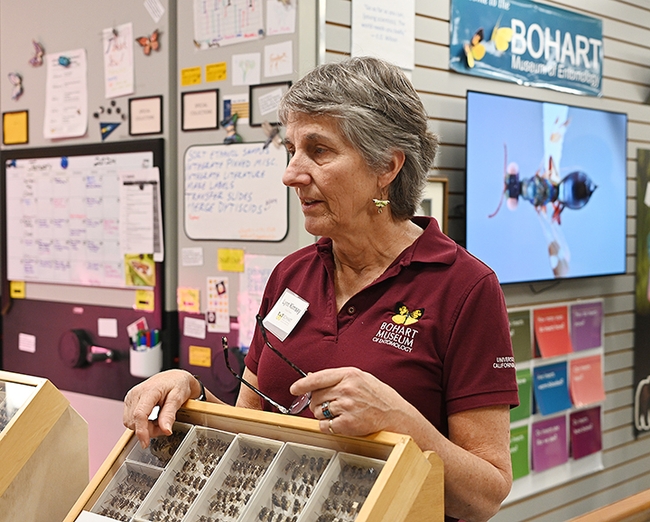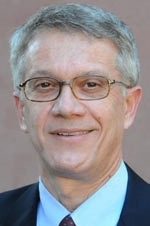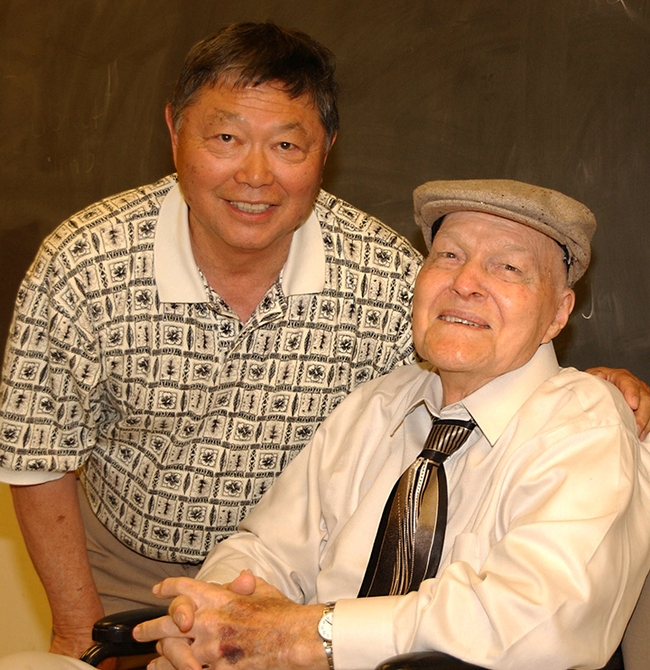
It's the birthday anniversary of noted entomologist Richard "Doc" Bohart (1913-2007), founder of the Bohart Museum of Entomology, University of California, Davis.
So when the Bohart Museum hosts a public open house (theme:"Museum ABCs: Arthropods, Bohart and Collecting") from 1 to 4 p.m., Saturday, Sept. 28, plans also call for a tribute to him and his work.
"Doc" Bohart founded the insect museum in 1946 and served as its first director; compiled 32 years on the entomology faculty; and became an internationally recognized entomologist and author.
Born Sept. 28, 2013 in Palo Alto, Richard began collecting butterflies at age 7. "He and his brother George 'Ned' Bohart collected butterflies for a local collector to earn pocket money," according to UC Davis distinguished professor emerita Lynn Kimsey, who directed the Bohart Museum for 34 years until her retirement on Feb. 1, 2024.
Bohart attended UC Berkeley, receiving three degrees in entomology culminating in his doctorate in 1938. He joined the UC Davis faculty in 1946 and chaired the Department of Entomology from 1956 to 1965. He taught general entomology, medical entomology, systematics, and agricultural entomology.
According to the Academic Senate's memorial, Bohart "contributed substantially to the world literature of the insect Order Hymenoptera, which included two landmark books, Sphecid Wasps of the World (with A. S. Menke), and The Chrysidid Wasps of the World (with L.S. Kimsey), as well as 230 journal articles and four other books on wasps and mosquitoes, including the second and third editions of The Mosquitoes of California (the second with Stanley B. Freeborn and the third with Robert K. Washino). During his career, he described more than 200 new species and genera of insects."
Today the Bohart Museum is the home of a global collection of eight million insects; a live petting zoo (including Madagascar hissing cockroaches, stick insects and tarantulas); and an insect-themed gift shop, stocked with T-shirts, hoodies, jewelry, books, posters, and collecting equipment. The new director, only the third since 1946, is Professor Jason Bond, the Evert and Marion Schlinger Endowed Chair in Insect Systematics, UC Davis Department of Entomology and Nematology, and associate dean of the UC Davis College of Agricultural and Environmental Sciences.

"His teaching and collecting activities resulted in the development of one of the finest collections of stinging wasps in the world in the Bohart Museum of Entomology," Kimsey said. "A great deal of this material was obtained through his collecting and that of his students. During his tenure, the museum collection grew from 500 specimens to 7 million, a span of some 60 years. Chancellor James Meyer dedicated the entomology museum in his name in 1983. The R. M. Bohart Museum moved into a new building in 1994 and was dedicated by Chancellor Larry Vanderhoef."
Open House. The open house, free and family friendly, will include "an overview of terrestrial arthropods which encompasses everything from insects, arachnids, millipedes, isopods and centipedes," said Tabatha Yang, education and outreach coordination. "We will also showcase some of the trapping/catching methods we use, for example, nets, lights, pitfall traps and malaise traps."
Pinning, spreading and curation demonstrations are planned "so people know how to take care of and preserve a dead arthropod for research or for a personal collection," Yang said. "People sometimes find a dead dragonfly or a butterfly on the ground and we often get asked how they can preserve it."
"We also get asked a lot of questions about our own collection and why the specimens don't decay," she added. "We will highlight the different curation techniques from pinning, point mounting, preserving in alcohol and mounting on slides."
Entomologist Jeff Smith, curator of the Lepidoptera collection, which encompasses some 750,000 specimens, will demonstrate and discuss the various steps of relaxing, pinning, spreading, and labeling moths and butterflies.
A Bohart volunteer since 1998, Smith has spread the wings of some 180,000 moths and butterflies, typically 6,000 or more each year for the past 30-plus years. He has crafted and donated some 2,475 wooden specimen drawers, including 110 so far this year. He also has donated some 100,000 specimens (primarily butterflies, moths but a few other insects, including beetles) to the Bohart Museum.
Attached Images:
